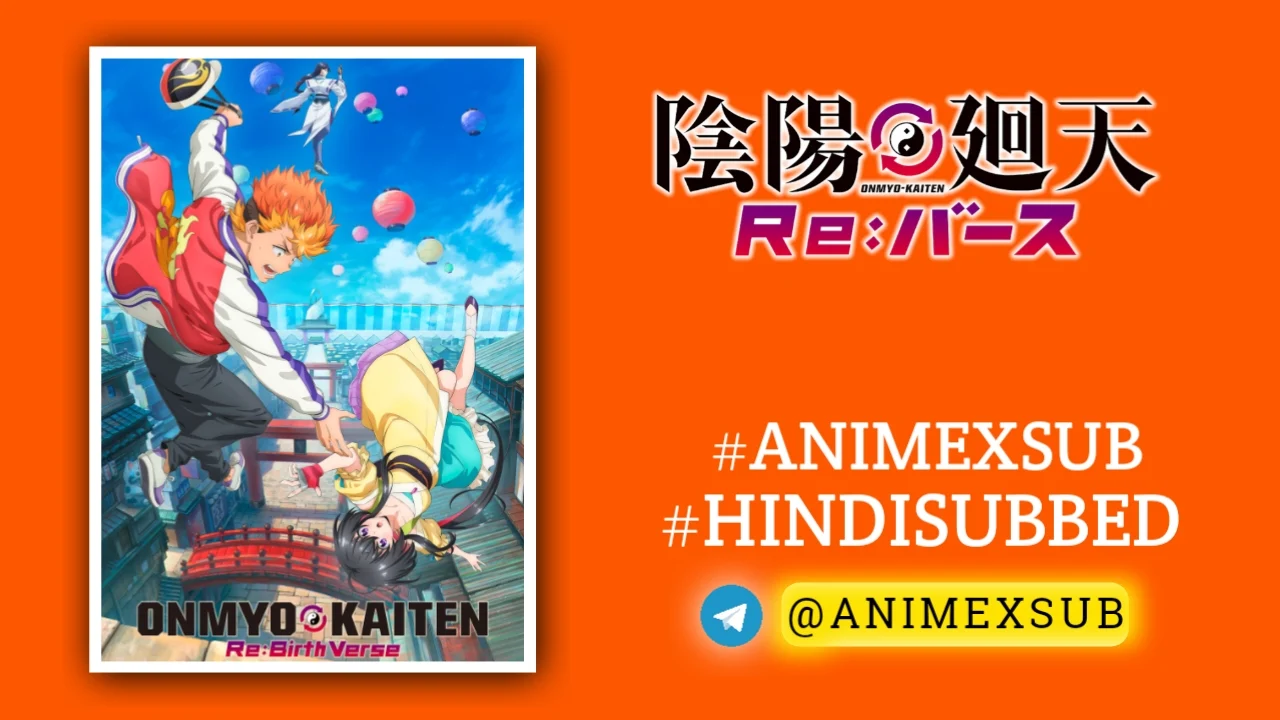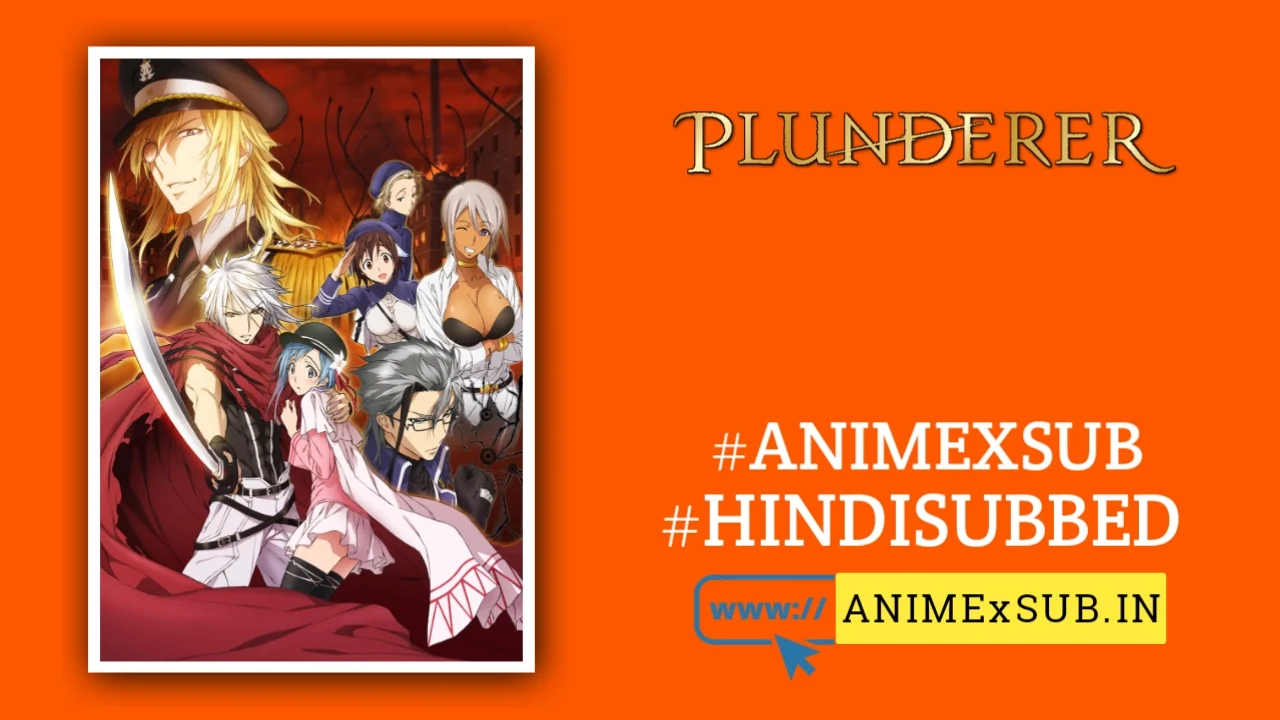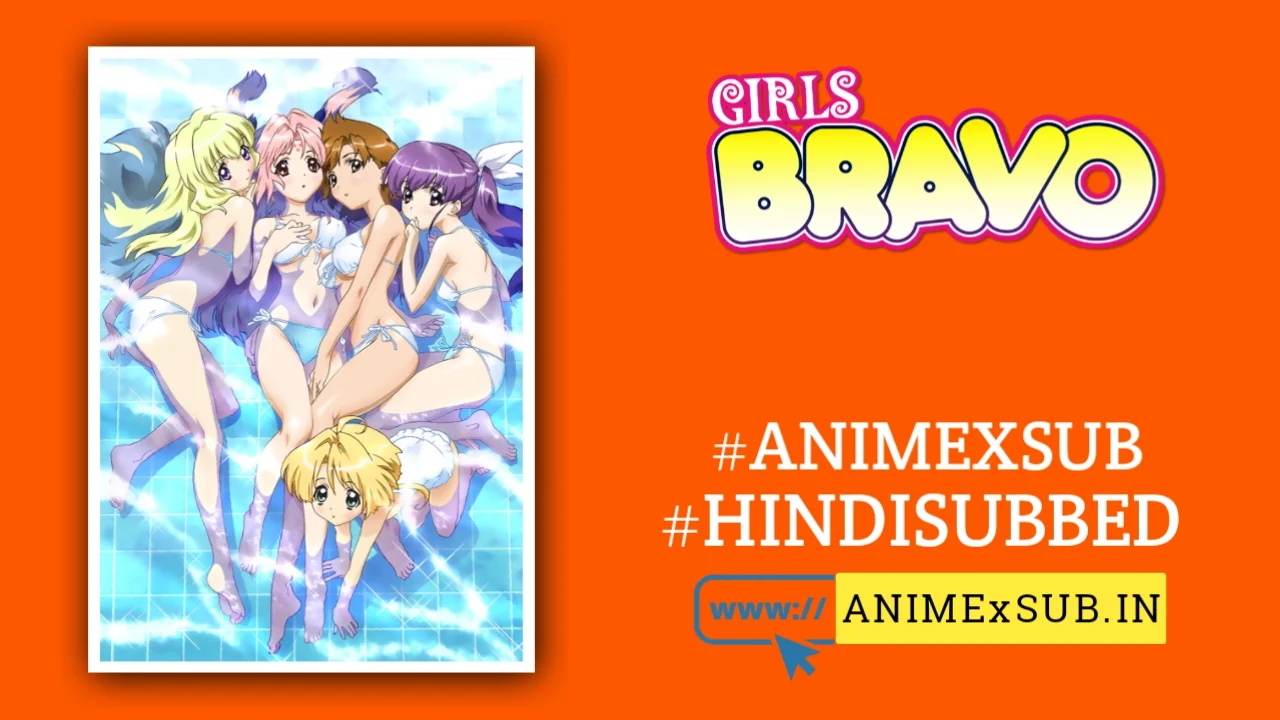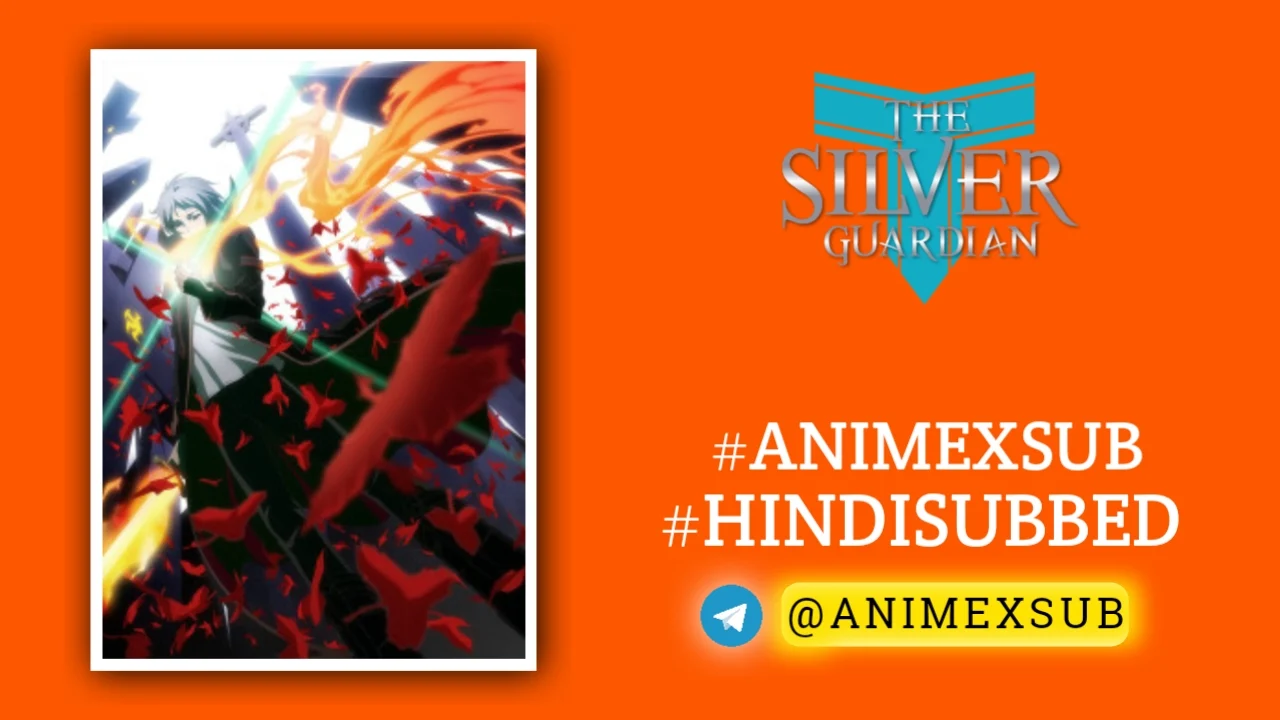
Onmyo Kaiten Re:Birth Verse Hindi Subbed [11/12] | Onmyou Kaiten Hindi Sub

Onmyo Kaiten Re:verse
Onmyo Kaiten Re:Birth VerseSynopsis
The anime is set in an alternate version of Heian-kyou, the old name of Kyoto and the capital during Japan's Heian era. This alternate version of the city is named Denji Heian-kyou. A delinquent high schooler named Takeru Narehira resides in our world, but after an unfortunate accident, is transported to Denji Heian-kyou. Here, he immediately meets Tsukimiya, a woman he has seen many times before in his dreams. Hardly a moment passes after that encounter when Takeru and Tsukimiya encounter an oni monster, and lose their lives. Takeru awakens, stunned to find himself again at Denji Heian-kyou. He puts together that he has the power to go back in time. Now he resolves to learn this world's version of mystical onmyōjutsu techniques, and become an onmyōji sorcerer to save Tsukimiya. (Source: Anime News Network)
Watch Trailer
Characters
Episodes
How To Download Tutorial
Onmyou Kaiten Re:Birth Verse Season 1: A Delinquent’s Temporal Odyssey in Fractured Heian Realms
In the crowded arena of Summer 2025 anime, where isekai tropes clash with historical fantasies, Onmyou Kaiten Re:Birth Verse emerges as a bold original experiment. Animated by David Production—known for the kinetic chaos of JoJo’s Bizarre Adventure and the emotional depth of Cells at Work!—this 12-episode series, directed by Hideya Takahashi, fuses time loops, onmyouji sorcery, and mecha-infused shikigami in a parallel Heian-era Japan. Premiering on July 3, 2025, via Fuji TV’s +Ultra block and streaming on Crunchyroll, it follows Takeru Narihira, a modern-day delinquent thrust into a neon-drenched alternate history. What starts as a familiar “truck-kun” isekai quickly unravels into a narrative of cyclical death and rebirth, challenging viewers to question the boundaries of fate, identity, and technological mysticism. This review dissects its innovative layers, from worldbuilding that reimagines ancient folklore through a cyberpunk lens to character arcs that evolve beyond delinquent clichés, revealing why Season 1 stands as a pivotal, if uneven, evolution in genre-blending anime.
The Fractured World of Denji Heian-kyo: A Cyber-Mystical Tapestry
At its core, Onmyou Kaiten recontextualizes Japan’s Heian period (794–1185 CE) as Denji Heian-kyo, a sprawling metropolis where classical onmyouji practices collide with speculative futurism. Traditional shikigami—once ethereal spirit familiars—are reimagined as hulking, rune-etched mecha constructs powered by yin-yang energy flows, battling hordes of Oni emerging from the encroaching Black Mist. This mist isn’t mere atmospheric filler; it’s a sentient, reality-warping force that corrodes the boundaries between eras, blending Taisho-era architecture with holographic talismans and steam-punk automatons. The series draws from historical onmyouji like Abe no Seimei, elevating him from legend to a grizzled mentor figure whose divinations reveal temporal fractures caused by unchecked technological hubris.
What elevates this setting beyond typical isekai backdrops is its internal logic: the parallel universe operates on “kaiten” cycles, where time doesn’t flow linearly but spirals in response to emotional anchors—like Takeru’s fixation on Tsukimiya. Episodes 3–5 masterfully explore this through “echo realms,” pocket dimensions where past iterations of characters bleed into the present, manifesting as glitchy apparitions or corrupted shikigami. This isn’t just visual flair; it ties into thematic explorations of karma and reincarnation, positing that Oni aren’t demonic invaders but echoes of humanity’s suppressed regrets, amplified by forbidden experiments in quantum yin-yang fusion. Critics have noted the influence of Steins;Gate‘s temporal mechanics and Demon Slayer‘s folklore, but Onmyou Kaiten innovates by grounding them in a steampunk Japan that feels lived-in, from bustling night markets lit by foxfire lanterns to fortified academies where apprentices duel with energy blades disguised as katana.
Yet, the world’s density occasionally overwhelms. Early episodes bombard viewers with lore dumps—explanations of “re:verse points,” where time loops converge—without sufficient breathing room, leading to a hodgepodge feel in the premiere. By mid-season, however, Takahashi’s direction tightens, using fluid CGI transitions to depict mist incursions as psychedelic rifts, making Denji Heian-kyo a character in its own right: a decaying paradise where tradition and innovation wage an eternal war.
Takeru’s Reluctant Rebirth: From Delinquent to Diviner
Protagonist Takeru Narihira (voiced by Taihi Kimura in a raw, gravelly performance) defies the overpowered isekai hero archetype. A Tokyo high school brawler haunted by dreams of the ethereal Tsukimiya (Maaya Uchida, delivering a haunting blend of vulnerability and resolve), Takeru’s “accident”—a fall off a cliff during a street fight—hurls him into Denji Heian-kyo. His first loop ends in brutal death alongside Tsukimiya during an Oni ambush, awakening him to his time-leap ability. This isn’t empowerment fantasy; it’s a curse that forces Takeru to relive traumas, each cycle eroding his brash facade to reveal layers of isolation stemming from a fractured family backstory hinted at in flashbacks.
Season 1’s arc traces Takeru’s transformation under Abe no Seimei (Ryohei Kimura, channeling wise gravitas), who trains him not in brute strength but in emotional attunement to yin-yang balance. Key episodes like 7 (“Echoes of the Forgotten Vow”) delve into Takeru’s psyche, where loops manifest his regrets as personalized Oni—shadowy doppelgangers that force confrontations with his abandonment issues. This psychological depth sets Onmyou Kaiten apart, evolving the delinquent trope into a meditation on growth: Takeru learns that true power lies in forging bonds, not fists, culminating in a mid-season alliance with rival onmyouji Atsunaga (Kaito Ishikawa), whose arrogance mirrors Takeru’s initial hubris.
Supporting cast shines too. Tsukimiya isn’t a damsel; her role as a “mist-seer” grants visions that guide Takeru’s loops, but her own arc explores the burden of predestination, adding romantic tension laced with tragedy. Yura (Satsuki Yukino) and Kazura (Rei Sakuma) provide comic relief and mentorship, their banter humanizing the high-stakes sorcery. Voice acting elevates these dynamics—Uchida’s Tsukimiya shifts from dreamlike whispers to fierce battle cries, while Kimura’s Takeru conveys raw evolution without overacting.
Visual and Auditory Sorcery: David Production’s Mecha-Mystical Mastery
David Production’s animation is the series’ undisputed powerhouse, blending 2D fluidity with seamless CGI for shikigami battles that rival 86‘s intensity. Oni designs evolve across loops, from hulking brutes to agile, mist-shrouded variants with biomechanical limbs, their assaults choreographed with balletic precision. Standout sequences, like Episode 9’s “Kaiten Convergence,” feature multi-layered fights where Takeru’s mecha-shikigami clashes with Oni in zero-gravity rifts, colors shifting from crimson yin bursts to azure yang shields. Background art captures Denji Heian-kyo’s duality: opulent pagodas pierced by neon veins, misty alleys alive with subtle particle effects that evoke Ghost in the Shell‘s cyber-noir.
Masahiro Tokuda’s score is a revelation, fusing taiko drums with synthwave pulses and koto strings warped through digital filters. The OP, “Re:Verse Eternal” by a virtual band, pulses with electronic shamisen riffs, while ED tracks vary per loop, underscoring emotional resets. Sound design amplifies immersion—Oni roars distort like feedback loops, shikigami activations hum with resonant energy. At 5.8/10 on IMDb from early ratings, visuals often salvage narrative stumbles, though some critique the CGI’s occasional stiffness in crowd scenes.
Temporal Twists and Thematic Depths: Strengths, Stumbles, and Season 1’s Legacy
Onmyou Kaiten excels in subverting expectations: time loops aren’t reset buttons but escalating stakes, with each death accumulating “resonance scars” that alter Takeru’s abilities and relationships. Mid-season reveals twist the formula—the Black Mist as a collective unconscious born from Heian-era hubris, tying personal growth to cosmic redemption. Themes of cyclical violence resonate, critiquing how unaddressed trauma perpetuates destruction, with Takeru’s arc mirroring broader societal “loops” in Japan’s historical-tech fusion.
Flaws persist: Pacing falters in lore-heavy arcs (episodes 4–6 feel exposition-laden), and some side plots, like Yura’s subplot, resolve abruptly. Female characters occasionally lean into support roles, though Tsukimiya’s agency grows. Compared to peers like Frieren, it lacks emotional polish, but its originality—manga adaptation by Kyūjo Matsumoto running concurrently—hints at untapped potential.
Season 1 concludes on a cliffhanger, Takeru shattering a core loop to glimpse the mist’s origin, setting up multiversal expansions. For isekai weary of power fantasies, Onmyou Kaiten Re:Birth Verse offers a refreshing, if imperfect, rebirth: a series that dares to loop folklore into futurism, proving anime’s endless capacity for reinvention.1












